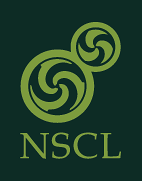Properties of light nuclei using local chiral Interactions
Predicting the emergence of nuclear properties from nuclear interactions is a formidable task. A fundamental question is whether it is possible to describe nuclei and their global properties, e.g., binding energies, radii, transitions, and reactions, using microscopic nuclear models constructed to reproduce only few-body observables, while simultaneously predicting properties of matter, including the properties of neutron stars. Despite advanced efforts, definitive answers are not yet available.
In a recent letter [Phys. Rev. Lett. 120, 122502], authored by FRIB Theory Fellow Diego Lonardoni and collaborators, a new class of nuclear interactions, called local chiral interactions, optimized to few-body observables probing the physics of light nuclei has been used to perform quantum Monte Carlo calculations for light and medium-mass nuclei. The results show that these interactions provide a very good description of the ground-state properties of nuclei up to oxygen, while providing an equation of state of pure neutron matter compatible with astrophysical neutron star observations.
This work paves the ground for accurate studies of the medium-mass nuclei, with the aim of deepening our understanding of the nuclear force in the limit of high neutron-to-proton imbalance. It is anticipated that for neutron-rich nuclei, FRIB will provide crucial data, further constraining microscopic theory.

Figure 1: Ground-state properties of nuclei with 3≤ A≤ 16: (top) binding energy per nucleon; (bottom) charge radius. Error bars include both statistical and systematic uncertainties. Final results (red dots) are to be compared with experimental data (green stars).
Contact: Diego Lonardoni (lonardoni@nscl.msu.edu)



